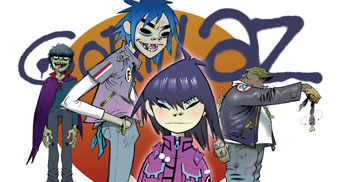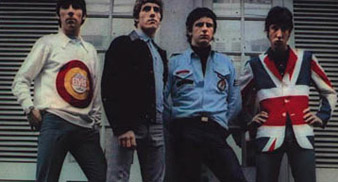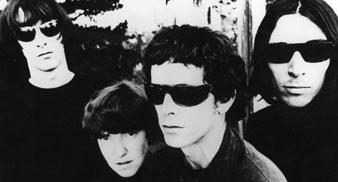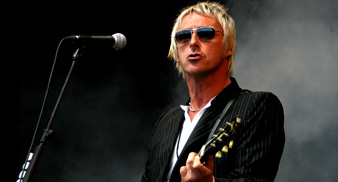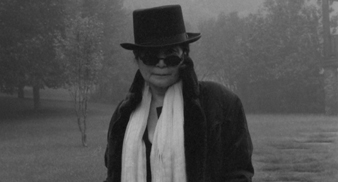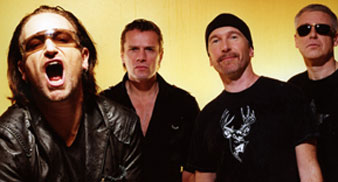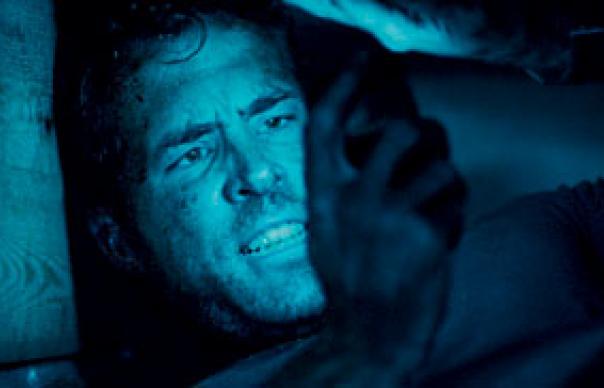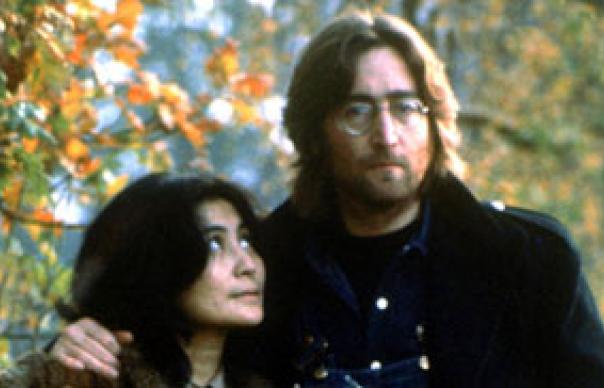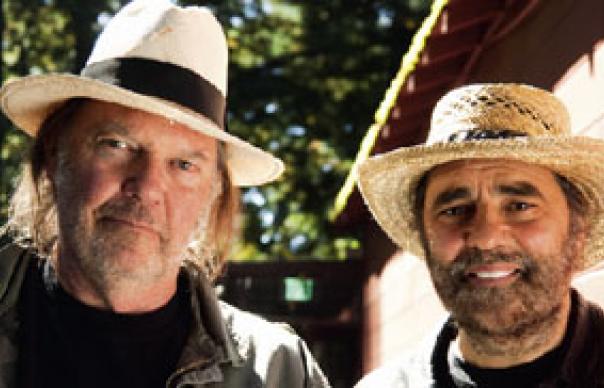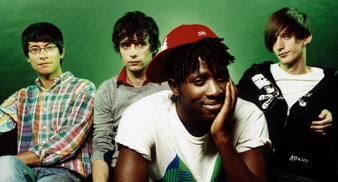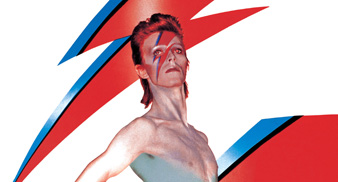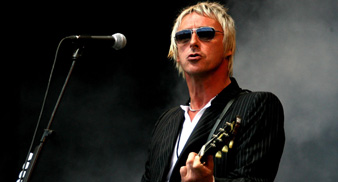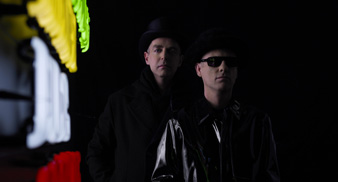Sad news reached us last night of the death of Arthur Penn, aged 88. Penn, of course, was the director of many great films including Bonnie And Clyde, Night Moves and The Missouri Breaks.
Here, by way of a tribute, I thought we'd run the transcript of an interview Damien Love did with Penn for Uncut. The interview took place in 2004, while Penn, then 81, was directing a Broadway revival of the play Sly Fox. Speaking in detail about his career, he shared his memories of working with Beatty, Brando, Newman and Hackman, as well as discussing the enduring legacy of his masterpiece, Bonnie And Clyde.
[youtube]SlO55BuQ47M[/youtube]
Damien Love: Can I start with The Left-Handed Gun? You had been directing on TV and in theatre. Had you always wanted to get into movies?
ARTHUR PENN: Well, it was not something that I really deeply desired. It was really an event that took place in those particular years, when the live TV, the direct transmission TV, sort of emptied the movie houses, to the great consternation of the Hollywood studios. They couldn't understand it, so their instinct was to hire what amounted to a generation of television directors away from television and into films. And so we all went, rather much at the same time: Lumet, Frankenheimer, Mulligan, George Roy Hill, Frank Schafner etcetera.
Given that Hollywood, the industry, was almost at war with TV, did you experience any resentment from the Hollywood people when you started there?
Oh yes. Very definitely. While I was shooting Left-Handed Gun, the cinematographer, who had been under contract to Warner Brothers for most of his life, just said to a passing group, who asked "How's everything going?", he said: "I got wunna them television guys," meaning me. And meaning that these people don't know what they're doing.
That film seems almost part of a wave that was initiated by the impact of James Dean. Would he have been up for the part if he had lived?
No, he wouldn't have been. That was always definitely going to be Paul Newman, but prior to that, whilst still in live TV, I was just preparing a show, a live telecast, with James Dean and Paul Newman, based on a Hemingway short story called "The Battler." And Dean was killed while we were preparing it, and so Paul Newman switched over into the part that James Dean was going to play on that. So that's rather ironic that you ask that. But no, I don't think it would have been James Dean. I had a great affection for Newman, we were pretty much joined in that project.
You had both shared the experience of the Actors Studio, did that forge an alliance between you, against the Old Hollywood guard?
Well, it wasn't so "clubby," it was that, people at The Studio, because you get into The Studio only through a very arduous audition process, I could take for granted that people at The Studio were very good actors. And Paul and I had worked together in live TV prior to this, so, we knew each other very well. I suppose that, underneath it all, the fact that we were both in The Actors' Studio was an asset, undoubtedly.
We call that type of film “a revisionist western” now. While you were making it, was it part of your intention to subvert the form?
Ah yes, it was. I thought that we weren't quite making a western, although we were, y'know, in the framework of that. I thought we were making the story really of something of the events in the west as they were being reported in the east in a whole series of comic book, yellow journals, yellow press, and the figure of Moultrie is really a figure of somebody who has come out of the east and has chosen really to idealise the figure of Billy the Kid, only to feel at the end betrayed by him, and consequently to betray him.
That theme, about the relation between myth and reality, seems to recur in several of your films, Bonnie and Clyde most obviously. In The Left-Handed Gun, you seem to want to remove myth, but in Bonnie and Clyde you almost seem to want to recreate a myth, is that fair?
I don't know if I recreated a myth. I was really trying to tell a true story; not really a true story in the sense that I had an actual model for it, but I just inferred from that yellow press that they were idealising these people, and that that was the myth in itself, and whether the myth could be fulfilled - and of course, myths really can't be, and so disappointment results.
There had been a Left-Handed Gun script written for television by Gore Vidal, can you say how your script differed?
Oh yes, it was totally different. Leslie Stevens and I wrote virtually a whole new script. You know, I don't have any memory of the Gore Vidal script, because, essentially, that was done by somebody else on television. And when it was proposed to me to make a film, we took really just the person of Billy the Kid, and then went our own way, very much our own way.
That film was your first experience of a film being taken away from you when it got to the editing stage. Did that come as a shock?
A total shock. Total shock. It was really on the last day of shooting, that a man came up to me and said, "Hello, I'm Folmar Blangstead, I'm the best edior in Hollywood, and I'm gonna edit your film." And, you see, having come from live television, where we were editing our own work on the air, editing was so much a part of my consciousness while making it that I was utterly bewildered, and greatly disappointed. And I sort of left Hollywood at that point, thinking "This is not for me," and I went back to the Broadway theatre.
[youtube]xF9AoQQ4dP4[/youtube]
I'd like to move forward a few years to Mickey One. Where did that film come from?
Well, it came from a play, a play script, that I had received, and it was not a very good play, but I thought the story in it was applicable, in my view, to what was prevailing in the United States at that time, which was the timidity that the McCarthy era had engendered, the sense of guilt and a sort of silence and evasion. And so I talked with the playwright, and we decided together to restructure a small portion of that play into a film, and that's how Mickey One came about.
What were the cinematic influences on you when you were making that film? I can see some hints of Orson Welles, but there's also a very European thing...
Oh yes. Well, I was thinking of European films. I had been to Paris and met with Truffaut and Godard, and we had had long conversations and dinners, and what I realised, I think, was that we were essentially trying to do in cinema in our own countries something very similar to each other. And so I engaged for that a cinematographer from France, Ghislain Cloquet, who had been Robert Bresson's cinematographer. And the intention was to do black and white as it had been done, as I thought, extraordinarily well in the Bresson films.
How did Warren Beatty come to be involved in that?
Ha. Well, we were introduced to each other, and he said, "What are you doing?" And I told him what I was doing, and he said "I wanna be in it." I said, "Well, wait a minute, y'know, you haven't read it yet." He said, "No, I wanna be in it, you're a good director." He had seen some of the theatre I had done and television, and the first film, so he said he wanted to be in that film. When he read the script, he was a little more dismayed. And he spoke out about what he felt about it, and I said, “Well, you're always free to go.” But he said, "No, I'm not going, I'm gonna stay and do it." And then, I had Yvette Mimieux to play the woman, but she was taken away from us because she was under contract to MGM, just a couple of days before the start of shooting. I had seen a film by Louis Malle, Le Fou Foullet, and in it was Alexanda Stewart. So I tried to call Louis, couldn't reach him, so I called Truffaut, and asked him to tell me about her, and he said, "Oh, she's wonderful," and so we hired her sight unseen really. And she arrived and she was lovely.
I'm guessing the studio left you alone to make that, but what was the reaction when you turned it in?
Consternation. Total consternation. But it was a very inexpensive film, and one of the conditions I had applied to my contract with them was that they couldn't read the script, they couldn't interfere in anyway, and that I would deliver it for, oh, I think a million dollars at that point. And we did. But they didn't like it one bit.
What about in terms of the critical reception? Did anyone try and engage with it, or was it dismissed?
It was dismissed by a large number of critics, but embraced by one, Judith Crist, who wrote very, very insightfully about it, I thought, and affectionately. She was very much in favour of it.
How do you feel about that film today?
Well, I feel it's a little, what shall I say, excessive, certainly, and a little excessively symbolic. It could have done better with a somewhat straighter storyline, with odd implications, but certainly a more comprehensible storyline. But I'm still rather proud of it, I think it's a very interesting film.
I also think that The Chase, which is the next film of yours I wanted to talk about, comes out of it. Both The Left-Handed Gun and Mickey One touch on this idea of there being a particular kind of violence lurking in American society, and that seems to come to the fore in The Chase.
Yes, I totally agree. What we're doing however, is leaving out one other film, which is The Miracle Worker, which had its share of, how shall I say, positive violence, in the sense that Ann Sullivan, in the film Anne Bancroft, was determined to penetrate the slowly dying intelligence of this child, and get through to her the concept that language was the symbol for idea. So, they were a series of fairly vigorous films.
The Chase was set in a small Texas town, which could be described as a racist town, and you were doing it just a couple of years after JFK had been assassinated down there, and of course the killing of Lee Harvey Oswald. Did that atmosphere leak into the film? Did you let it?
Totally. Finally, the killing of Bubber, of Robert Redford, is almost a replication of the shooting of Lee Harvey Oswald by Jack Ruby; this rather silent figure jumps out of the crowd, runs up to him and shoots him. But throughout the film, there was no question that we were, how shall I say… The whole film was informed by a certain sense, as Marlon Brando plays the character of the sheriff, that a man who is attempting to use non-violence is slowly defeated over the course of the film.
I'd like to ask you about Brando. Can you say how or if his presence altered the chemistry of a movie set. I mean, did it have a palpable impact when he appeared?
Well, we all were together. So we rehearsed jointly. Everybody knew Marlon, he was known to everybody in the cast. A lot of those people were Studio people, and he and Jane Fonda knew each other very well, from sharing many political views in common. So, Marlon was not in that sense any kind of a larger than life personality - he was simply Marlon, a very easy-going and very committed fellow. And we had a splendid time together.
He improvised a lot on that film. Did he influence your direction at all?
Every once in a while he did. And I could wish, again, that the editing had been under my control, because there were certain other little improvisatory moments that were quite wonderful that were not included [in the final cut]. There are some, but not many. He was diligent about the script, really, but every once in a while we would be in a situation where the text of the script was not inclusive enough to deal with what was going on, and so Marlon would improvise with all these actors who, in turn, were able to improvise back.
I wondered about that extraordinary beating that he takes; he seemed to be going through a bit of a masochistic period back then, he'd just done his crucifixion scene in One Eyed Jacks. When you were directing that scene in The Chase, did you learn anything about how to film violence that you took into Bonnie And Clyde?
Yes, I did. I had, in The Chase, tried to do a little experiment with slow-motion, and immediately that the rushes were seen by the head of the Warner Brothers studio, a very severe note came down to me: No More Slow-Motion. So, when we came to do that big fight, in which Marlon gets really beaten savagely by the people in the town, Marlon suggested that, since we had such good actors, that we both knew very well from The Studio, that we could, instead of faking the punches, we could really do the punches, only ever so slightly slower, and then what we did was under-crank, so we were shooting somewhere between 18 and 20 frames per-second, and so, when you project it at full speed, consequently a really savage beating takes place, with Marlon really doing some perfectly amazing things. Some of them I didn't expect, like rolling off the desk, onto the floor, and when he comes out of the courthouse, onto the concrete steps, I tried to persuade him to have a stuntman do that, and he refused.
The editing was again taken out of your hands on that. Did that sour you against films for a while?
Oh, yes it did. Yes it did. Because it was not really just taken out of my hands. I was lied to. I had arranged it in advance, so that I'd be able to edit the film in New York, where I was doing a play. And when we had completed the shooting, Sam Spiegel said to me: "Where do you wanna edit it, in London or Hollywood?" And clearly, neither venue would do if I was doing a Broadway play, which I was.
[youtube]Sh0luSsP91I[/youtube]
How did Warren Beatty persuade you to get involved with Bonnie And Clyde?
Well it wasn't exactly easy. He asked me to do it, and I was cautious about it, but then I knew that if it were to be just Warren and me that those were auspices I knew I could trust, that we would be absolutely forthright with each other, because we have that kind of friendship. That was not my concern. My concern was, I did not know how to end that film. In the original script they were simply shot, and that was the end of it. And I thought, if that's all that occurs, we would have just watched the story simply of a couple of gangsters. So, as I thought about, I thought that it had to be set first of all in the context of the deep economic depression, and that they had to become somewhat legendary, because here we were doing it in 1967, and they had functioned 30 years prior to that; how did they remain in the consciousness of the country? Well, because there was something legendary about the two of them. And it wasn't until I got an image of the ending - and I really saw it one day, while I was up in the country, I saw exactly how I would do it, how I wanted to do it, and what it would look like. And I thought, "Aw, with that ending, I can make this film." And so I called Warren and said I was ready and able to go.
In what way is Bonnie And Clyde about the 1960s?
Oh, quite a lot. It's really about, it's a very simple version of, if they system is inimical to you, then you do whatever you can to alter your relationship to the system. In Bonnie And Clyde, it was a very simple event, the banks were foreclosing on these farms that had been afflicted by the dustbowl, and here were all these poor, and in numerous cases illiterate farmers, who were having their farms simply taken away. But then, nobody would farm that land, and so the banks were in effect doing what banks do, but not to anybody's benefit. And quite a number of gangsters took the same route as Bonnie And Clyde - John Dillinger, Pretty Boy Floyd, et cetera, which is: banks are where the money is, so let's go get some back. And there's a peculiar part of American history here, which is that the FBI, under J Edgar Hoover, was completely involved in ignoring the works of the Mafia in big urban centres, and instead declared these, what I would call country bumpkins, as Public Enemy Number One, Two, Three, Four, Five, y'know. And it was a complete deflection of attention away from the Mafia, and what has happened in latter years, is that the word has come out that the Mafia had photographs of J Edgar Hoover as a crossdresser, and that really immobilised him in any prosecutorial role in relation to the mob. So there we were with these rather naive people being declared Public Enemy Numbers One and Two and Three and Four, and it was that, how shall I say, that almost simplistic aspect that I tried to encompass in that one scene in Bonnie And Clyde, and then they come out and start shooting at the tire, and become aware that there's somebody approaching, and it turns out to be the farmer whose house this was, which has been foreclosed by a bank, and they stand there and sort of shoot out the windows, and introduce themselves to the farmer, and finally, Warren, in the first sort of act of self-identification, of self-definition, says, "This is Bonnie Parker, I'm Clyde Barrow, we rob banks." And he says it almost as a surprise to himself.
What was your intention in the violence in that film, when you were going into the film, what did you want to achieve?
Well, you know, I thought always that the violence in Hollywood films was really quite hypocritical. The code, which had existed for so many years, specified that you couldn't, in the same frame, fire a gun at somebody and see somebody be struck. You had to make a cut. And that cut is a distancing from the reality, or closer reality, and consequently the impact of it. And I was determined to not abide by that, and that's why, the first time they shoot somebody, the teller from the bank, it's all done in one take, in one shot. It was rather complicated to rig, shooting across the car, for Warren to see the man jump up on the running board opposite, grab his gun, fire through the window, and see the man hit. And all of that was a rather enormously elaborate piece of engineering I would say, but I was just determined to be in place rather than make a cut.
So it was your intention to...
Well, I thought, if we are living in the midst, as we were, of a war - as we are again now - you cannot sanitise that. That's a disgusting, horrible thing to see. And I saw it, I was in the Second World War.
I wanted to ask, if you experience in the war had consciously led you to want to challenge the Hollywood representation of violence?
Yes it did, yes it did.
The use of slow-motion at the end, after Bonnie And Clyde, Sam Peckinpah became very associated with that technique, it almost became his signature. How do you feel about his use of that, did he use it the same way you did?
He used it differently, but he used it very well. He said, "Y'know, listen Penn, I owe my career to you," - it was a joke, a rather drunken joke, but it was a joke. Peckinpah was a very talented director, he saw that as part of the language of film, just as everybody, when Truffaut froze the last frame of The 400 Blows, everybody started imitating that: suddenly hundreds of films were ending with a freeze frame, all over the world. Well, when something changes the language of cinema, it should be absorbed, it's like a new word in the language.
How did the studio respond to the film initially?
Oh, I can give it to you in one very succinct sentence. When we showed it to the head of distribution, he came out and he said: "This is a piece of shit."
What would you say the lasting influence of Bonnie And Clyde has been?
The lasting influence of Bonnie And Clyde... I think it's a little harder to find it in the current Hollywood. Because, what's happened in special effects has, in my view, dehumanised films to a great extent. There's no great effort to get the deeply personal stories - this is, now, I'm talking about the majority of films, there are always exceptions of course - but I think that certainly in the years between Bonnie And Clyde and Star Wars or Close Encounters Of The Third Kind, there was a significant influence of Bonnie and Clyde. And I think it's still there; I know that every film school studies and teaches that film at length, all around the country.
[youtube]xWGAdzn5_KU[/youtube]
Little Big Man was a film you had wanted to make for years, but were unable to. Why do you think that was?
Well, it was very peculiar. I would simply put it down to a kind of basic, Hollywood Establishment prejudice: they could not understand a film that was sympathetic to the Indians, to Native Americans. And the evidence for that was, this was after Bonnie and Clyde, and I was a big star director. Any studio would have been thrilled to have me. So, the heads of the studios would say, "You wanna make this film, huh? Okay, let's get it budgeted" And then the budgets would come back, with just astronomical numbers. It went on like that for years. Almost every studio head evinced interest, then... "just had to" back away. And it was an expensive film - but when we finally made it, we made it for considerably less than the smallest budget that had been submitted. When we finished the film, it had cost something like $9 million - there was no budget submitted less than $12 million. And those were astronomical figures in those days. Fortunately one man, at Cinema Centre, which was an adjunct of CBS' attempt to create a film studio, was given this job, and we had a long talk, and I said I would be as careful as I could in terms of expenditure, but it was a long film over, set over a long period with very many different weathers, and all that took a very great deal of time, but we still did it, I think, quite economically. Which was no great pleasure to Hollywood. Even the finished film was not admired by the Hollywood establishment at all.
What are your abiding memories of the shoot?
Oh, my, of Calgary, they're terrifying. We were there, up in the mountains, up near lake Banff, in one of the world's great ski areas, and it was covered with snow. What I had never expected, is that the Japanese current, which runs up through the Pacific, up around Vancouver Island, every once in a while, that wind blows from there, and it's a 50 or 60 degree Fahrenheit wind, and it promptly melted all the snow. And we had already shot some very wide, wide shots of the Custer advance across the snow, and it melted it, and there we were, stuck, with this denuded set. And that lasted almost a month, and so, what happened was, we had to shut down the set and send the crew back to Hollywood, where, fortunately, they got some other short-term employment, then we all regathered after the Christmas holiday, when the snow had fallen and covered the ground again. But it was a nightmare.
It's regarded as being among a group of westerns of the late 1960s and early 1970s that were in some way speaking about Vietnam - films like The Wild Bunch, Ulzana's Raid even Soldier Blue, though that's not a good film I think - how much was the war on your mind ?
Solider Blue, no. Well, it was not so much Vietnam, although, when it comes to wars of genocide, or genocidal attempts, they tend to resemble each other. I was really, in my mind, carrying the Holocaust. You know? Because it was such indiscriminate killing, based on some kind of societal definition of humans who can be dispensed with. And that impulse, it's happening today. It's happening everywhere. It happened in the Second World War, it happened in Vietnam, it's happening in Iraq, in war after war. They're mostly ethnic or religious genocidal wars.
[youtube]y4Fhzq61sb4[/youtube]
I'd like to go on to Night Moves. Can you tell me about you and Gene Hackman? How would you describe what he brings to your films?
Oh, he's just an absolutely wonderful actor. There isn't a dishonest bone in his body in front of the camera. And he brings a stately sobriety, when it's appropriate, but he's everything; he can be fun and hoot it up as Buck in Bonnie And Clyde, and then suffer that terrible death. In Night Moves, what motivated me was the assassinations had come tumbling down on all our heads, you know. Both Kennedys, Martin Luther King, George Wallace, you know, good bad, personal or not personal, the whole idea of having a society open itself in some bizarre way to countenance the mad element that just can pick up a gun and fire it and kill somebody. I mean, I don't know about the conspiracy theories, I don't happen personally to much embrace them, I think far more there's an atmosphere of psychosis at a certain point that seems to take over in society that permits assassination - not only permits it, but invites it, and I think we were in that kind of period. And I had a rather more immediate association with it, in that I worked with both of the Kennedys. So - I was in shock, quite frankly, and I just had to do a film about it, and Night Moves was it.
It’s coming out of that period of assassination, but also seems into the kind of paranoia that came down round about Watergate.
Oh yes, what it really was about was a certain sourness I felt about all of that, all of it lumped together, and that we - and that's why Gene, as the character, doesn't realise that he is a part of the conspiracy, as we all were, by permitting this nonsense of Watergate to go on as long as it did. And we have been doing it ever since: we permitted the pathetic impeachment of Clinton, y'know, the stealing of votes by Bush, and I think we're just in a terrible state.
There are some parallels between today and then, and at that period in the mid-1970s, there seemed to be a revival of the film noir in Hollywood: there was Chinatown, The Long Goodbye, the Mitchum version of Farewell My Lovely, Night Moves, then things like Taxi Driver. Do you think the industry today could stand another revival like that, films to address what's going on?
I don't think they'll permit it. There are no longer those kinds of studios; they have become small parts of huge corporations, and all they are really interested in is showing a profit, and consequently, profit in their terms means a film which can play all around the world, which means, essentially, a film not being dialogue-dependent, and therefore, you get non-people, and that's why we have things like Shrek - which is marvellous for what it is, but it tends to take the place of doing films. And I don't think many films of the future of any major significance are going to come out of there. A few of the smaller companies - Miramax is certainly trying very hard to do it, and they get credit for trying, but I'm not sure if they're succeeding. I mean, when they finally do Gangs Of New York, and think it's the major film of all time, and it's not even adequate. Scorsese is trying, but, in my view he's a very talented man who is very clever about playing the system, and he will give back to them much of what they want, quite often now at the expense of what I think is his real talent.
There's a moment in Night Moves when Hackman's character is talking about watching Eric Rohmer, and says it's like watching paint dry - was that an homage or your own personal feeling....?
No, no, it was a bit of an homage, but, you see, what happened was that the screenwriter had written “Claude Chabrol,” and I had said that it was in no way applicable to Chabrol, y'know, let's do it to Rohmer, who does that, and the character that Gene was playing, would have perceived those films as watching paint dry, but no, I admire Rohmer.
[youtube]N48pqpyyeHA[/youtube]
Finally, I wanted to talk about The Missouri Breaks. That's one of my favourite westerns, it's very adult, poetic and surprising. Watching it again, it's astonishing how grown-up the dialogue-intercourse between Jack Nicholson and the woman is. Why do you think that that film has a reputation as being a failure in some ways?
Oh, I think that everybody was expecting, finally, a shoot out on a western street between Brando and Nicholson, and that was never, never our intention. The odd scenes in that film just dismayed the critics on the first viewing. Y'know, Brando having a love scene with a horse and a mule; or Brando in the bathtub and Nicholson wanting to kill him, except that he looks like a big fat baby. Those were attempts at trying to disarm expectations and alter the... It's a rather savage film, actually, in certain aspects, but it's savage around ignominy. Brando shoots the people in relatively ignominious positions: a man going to the toilet in the outhouse is blow out of the outhouse; another man making love to a woman is shot; they're hounded by him and teased by him - he drops a live grasshopper into Randy Quaid's mouth, y'know? It's all designed toward that wonderful close - I think - of Jack Nicholson saying, "You just had yer throat cut." And that was what I think we all fell in love with, that moment. So we knew we had to do a western that was convoluted in other ways away from that, away from the flat-out, face-to-face shoot out. And so we did it, we did in the garden between Jack and Marlon. I have a lot of affection for that film, it had the boldness to be, to change expectations in a western with these two great stars. Well, everybody was disappointed. The studio said, "We said in the beginning it would never work unless they had a shoot-out..." And that was it.
How had Brando changed since you last worked with him? Or had he?
He hadn't really. We had remained friends through that period. Although I'm not a Hollywood person, I've never lived out there. But we had seen each other from time to time when he came to New York, or when I went out there for a one or two day business trip, and we had remained friends through that period. And when we came to make the film, he was in pretty wonderful form. I'll give you a pretty simple example. We were confronted with these things by lawyers, lawyers fighting for this, suddenly I was told, "You have Brando for 20 days and that's all." And I was rather shocked, so, as we were approaching the 20th day, I started to shoot a scene day-for-night, which I loathe, and Marlon came up and said, "Why are we shooting this day-for-night?" And I said, "On account of you, because I have to let you go tomorrow." And he said, "Aw, forget about it. Everybody, go home, we'll come back tonight, and the next night and the next night if we have to." And he was very available. He was living in a wonderfully big mobile home with his son, Christian, the poor young man who is now in jail.
How much of his quite staggering interpretation of that character was scripted?
None. None, we decided it together. Because, when we looked at the character as it was written in the script, he was nobody, he was just this dark eminence who struck like the apocalypse, you know. And I thought, this is going to be just dreadful on the screen. Then, of course, Marlon said, "Lissen, lemme play him as an Indian." And I said, "No. Marlon, no. Not as an Indian." So we sat there talking about it, and essentially we said: this guy's got to be different in every time we see him. That's his personality, that he's ephemeral, that he's chameleon like and in permanent disguise. And that's where we went from, so, finally, he ends up dressed as Granny.
You mentioned the studio's dismay at the lack of a shoot-out; I think people were also expecting, not a physical shoot-out, but a series of scenes where these two acting giants went face-to-face. But that's another thing you almost go out of your way to avoid as long as you can.
No, we weren't really trying to avoid it, we just found it very difficult. To have them encounter each other, and not have one or the other kill each other right there and then. Because, by then, Nicholson knew that Brando was killing off his band, and Brando knew that Nicholson was the head of it. So we were trapped. So what we dealt with was, instead of the action, the obstacles to the action.
How were Brando and Nicholson together?
Oh they were great. They live facing each other, literally they have houses facing each other, so they're very close, and they were very close on the film, but Jack, as a good actor, withdrew from Marlon during the shooting, didn't exercise the friendship, he would go away whenever he had an opportunity, go into his trailer, just to stay away, to stay in hiding really, as a good actor should. You know, too much chatter between the two of them would have ruined what they had.


